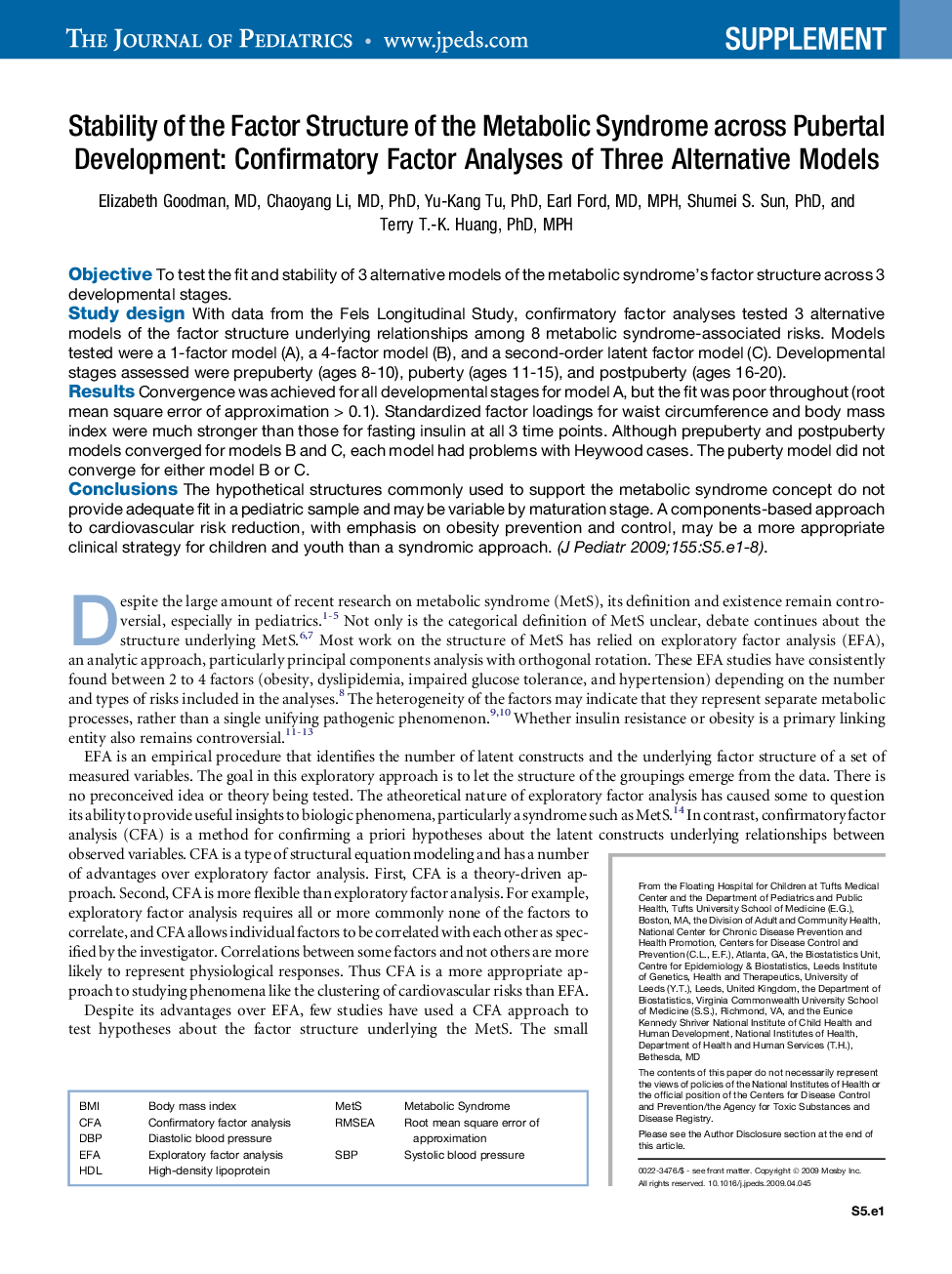| Article ID | Journal | Published Year | Pages | File Type |
|---|---|---|---|---|
| 4166387 | The Journal of Pediatrics | 2009 | 4 Pages |
ObjectiveTo test the fit and stability of 3 alternative models of the metabolic syndrome's factor structure across 3 developmental stages.Study designWith data from the Fels Longitudinal Study, confirmatory factor analyses tested 3 alternative models of the factor structure underlying relationships among 8 metabolic syndrome-associated risks. Models tested were a 1-factor model (A), a 4-factor model (B), and a second-order latent factor model (C). Developmental stages assessed were prepuberty (ages 8-10), puberty (ages 11-15), and postpuberty (ages 16-20).ResultsConvergence was achieved for all developmental stages for model A, but the fit was poor throughout (root mean square error of approximation > 0.1). Standardized factor loadings for waist circumference and body mass index were much stronger than those for fasting insulin at all 3 time points. Although prepuberty and postpuberty models converged for models B and C, each model had problems with Heywood cases. The puberty model did not converge for either model B or C.ConclusionsThe hypothetical structures commonly used to support the metabolic syndrome concept do not provide adequate fit in a pediatric sample and may be variable by maturation stage. A components-based approach to cardiovascular risk reduction, with emphasis on obesity prevention and control, may be a more appropriate clinical strategy for children and youth than a syndromic approach.
